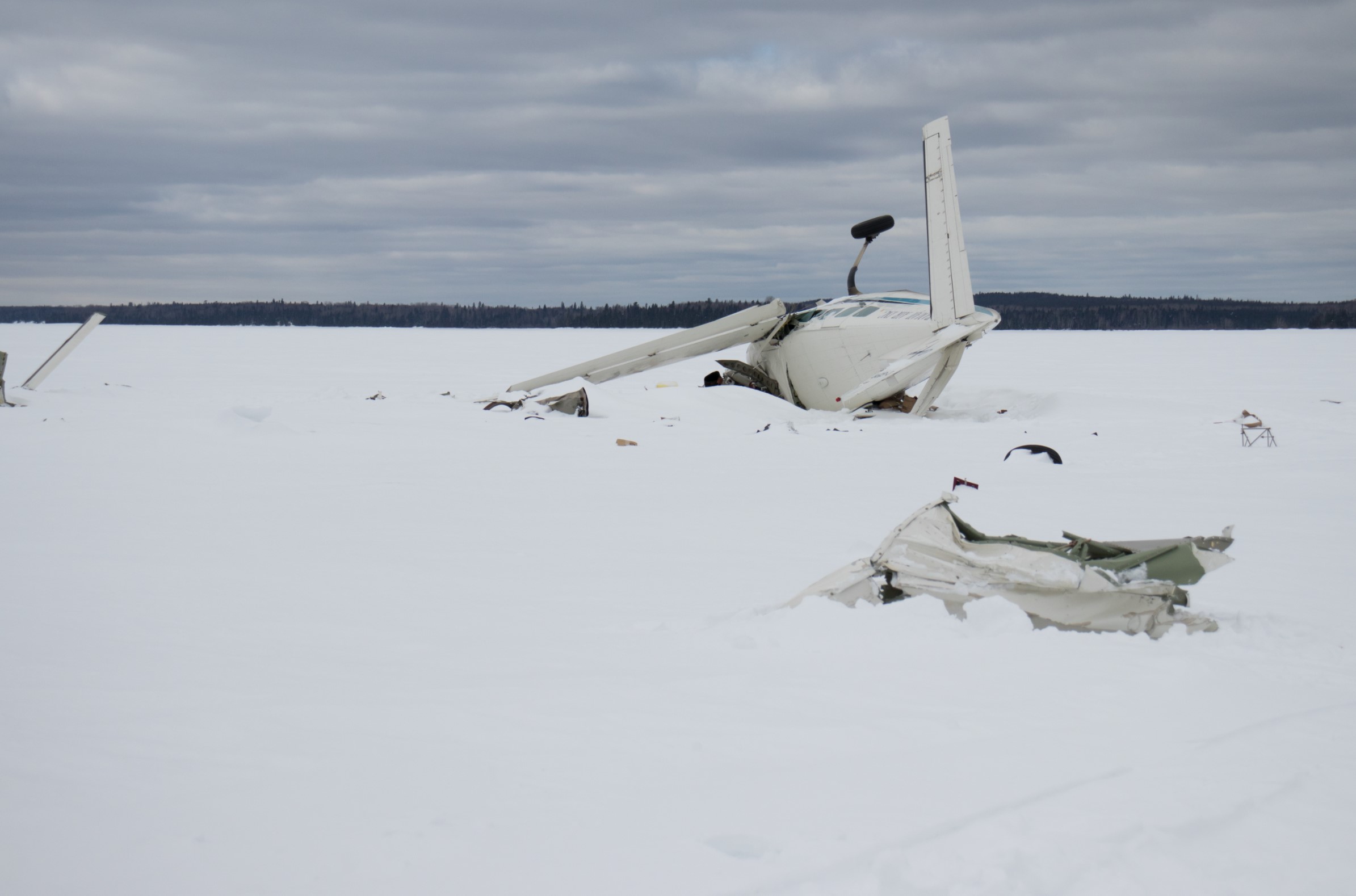Collision with terrain
Bamaji Air Inc.
Cessna 208 Caravan, C-GIPR
Sioux Lookout, Ontario, 17 NM NNW
The occurrence
On at 1315 Central Standard Time, a wheel-equipped Cessna C208 aircraft operated by Bamaji Air Inc. was conducting a visual flight rules (VFR) flight from Sioux Lookout (CYXL), Ontario, to an ice strip on Springpole Lake, Ontario, with one pilot and one passenger on board. Approximately 17 NM NNW of Sioux Lookout, the aircraft impacted the frozen surface of Lac Seul. The emergency locator transmitter (ELT) activated and was detected by the Search and Rescue Satellite-Aided Tracking (SARSAT) system. A Department of National Defense aircraft that was conducting training in the area responded, and SAR technicians parachuted into the site. The occupants suffered minor injuries and the aircraft sustained substantial damage. There was no fire.
Media materials
News release
Investigation report: March 2022 collision with terrain near Sioux Lookout, Ontario
Read the news release
Deployment notice
TSB has deployed a team of investigators following a collision with the frozen surface of a lake near Sioux Lookout, Ontario
Winnipeg, Manitoba, 14 March 2022 — The Transportation Safety Board of Canada (TSB) has deployed a team of investigators following the collision of a Cessna C208 aircraft with the frozen surface of a lake near Sioux Lookout, Ontario, on March 8. The TSB will gather information and assess the occurrence.
Investigation information
Download high-resolution photos from the TSB Flickr page.
Class of investigation
This is a class 4 investigation. These investigations are limited in scope, and while the final reports may contain limited analysis, they do not contain findings or recommendations. Class 4 investigations are generally completed within 220 days. For more information, see the Policy on Occurrence Classification.
TSB investigation process
There are 3 phases to a TSB investigation
- Field phase: a team of investigators examines the occurrence site and wreckage, interviews witnesses and collects pertinent information.
- Examination and analysis phase: the TSB reviews pertinent records, tests components of the wreckage in the lab, determines the sequence of events and identifies safety deficiencies. When safety deficiencies are suspected or confirmed, the TSB advises the appropriate authority without waiting until publication of the final report.
- Report phase: a confidential draft report is approved by the Board and sent to persons and corporations who are directly concerned by the report. They then have the opportunity to dispute or correct information they believe to be incorrect. The Board considers all representations before approving the final report, which is subsequently released to the public.
For more information, see our Investigation process page.
The TSB is an independent agency that investigates air, marine, pipeline, and rail transportation occurrences. Its sole aim is the advancement of transportation safety. It is not the function of the Board to assign fault or determine civil or criminal liability.
